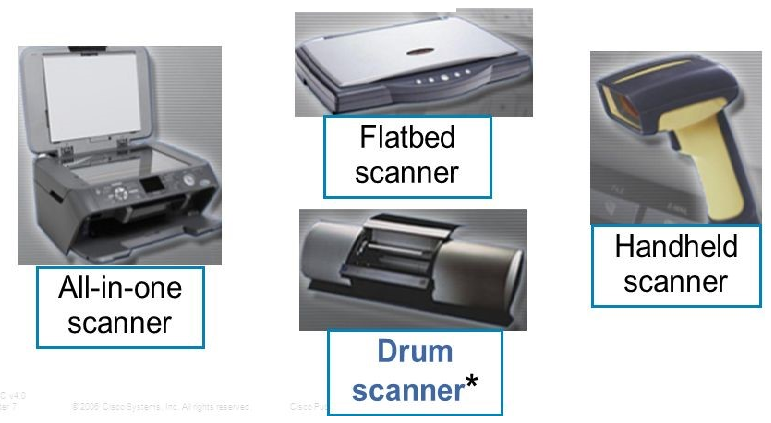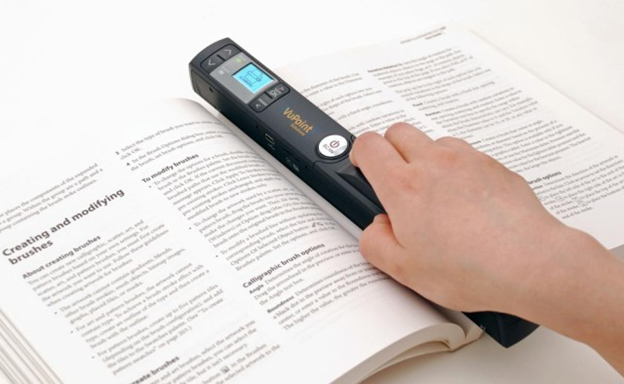Optical scanners.
Optical scanners capture data using a beam of light. A light beam passes over an object and the image is analyzed by specialized software

Some examples of optical scanners include;
Optical Mark Readers/Recognition. (OMR)
OMR detects marks made on a piece of paper using ink or soft pencil, by passing an infrared beam over them. The computer then interprets the data input.
Some uses of OMR
- Reading order forms
- Reading time sheets
- Marking multiple choice examination scripts
- Reading electricity metres
- Reading insurance payments
Optical Bar Reader/Recognition(OBR)
Used to capture data coded in lines of varying thickness known as barcodes or Universal Product Code(UPC). Barcodes holds manufacturer’s details and the product code but not price details because prices vary from one place to another.

Optical Character Reader/Recognition(OCR)
An OCR scanner is used to read typewritten, computer printed, or handwritten characters and transforms the images into a softcopy that can be manipulated using a wordprocessor. Today, a more advanced OCR scanner called a flat-bed scanner is used to capture pictures and real objects.

Some use of OCR
- Handling sales orders
- Clearing Cheques
Badge Readers
These are devices that are used to read data from rectangular plastic cards. The data are both in machine-readable and human-sensible form. When reading the badge, it is inserted into the reading unit where contents of the badge are conveyed as input. The computer processor converts this input into machine-sensible form for processing, in order to produce the desired information.
Some uses of Badge Readers
- Recording employees’ check-in and check-out times in factories
- Adjusting speed on conveyer belt in manufacturing industries
- Obtaining job details of employees when needed.
Magnetic scanners
Magnetic scanners are used to capture data written using magnetic ink or coded onto a magnetic strip. This device uses the principle of magnetism to sense the document characters, which have been written using magnetized ink. The ink is magnetized using particles of iron(II) oxide.
Common examples of magnetic scanners are, the Magnetic Ink Character Reader/Recognition (MICR), Magnetic Strip Readers (MSR) and card readers.
Magnetic Ink Character Reader (MICR)
MICR uses the principle of magnetism to convey its data inputs. The document characters are typed or printed using ink with particles of iron (II) oxide that gives them magnetic property. After forming the characters on the document, the magnetic ink encoded characters are magnetized by passing the document through a strong magnetic field. The MICR does Reading.
Some uses of MICR
Used in banks for cheque processing. The details of the cheque ,for example ,serial number, bank branch number, and account holder’s number, among others are coded in magnetic ink.
Advantages of MICR
- It is more secure against forgery than the OCR
- Reading speed is high.
One disadvantage of MICR is that the system is expensive.
Magnetic Stripe Readers (MSR).
A magnetic stripe is a layer of magnetic material on the surface of a plastic card.The magnetic stripe is read using a Magnetic Stripe Reader.
Some uses of MSR
- Reading plastic cards in banks.
- Reading telephone calling cards.